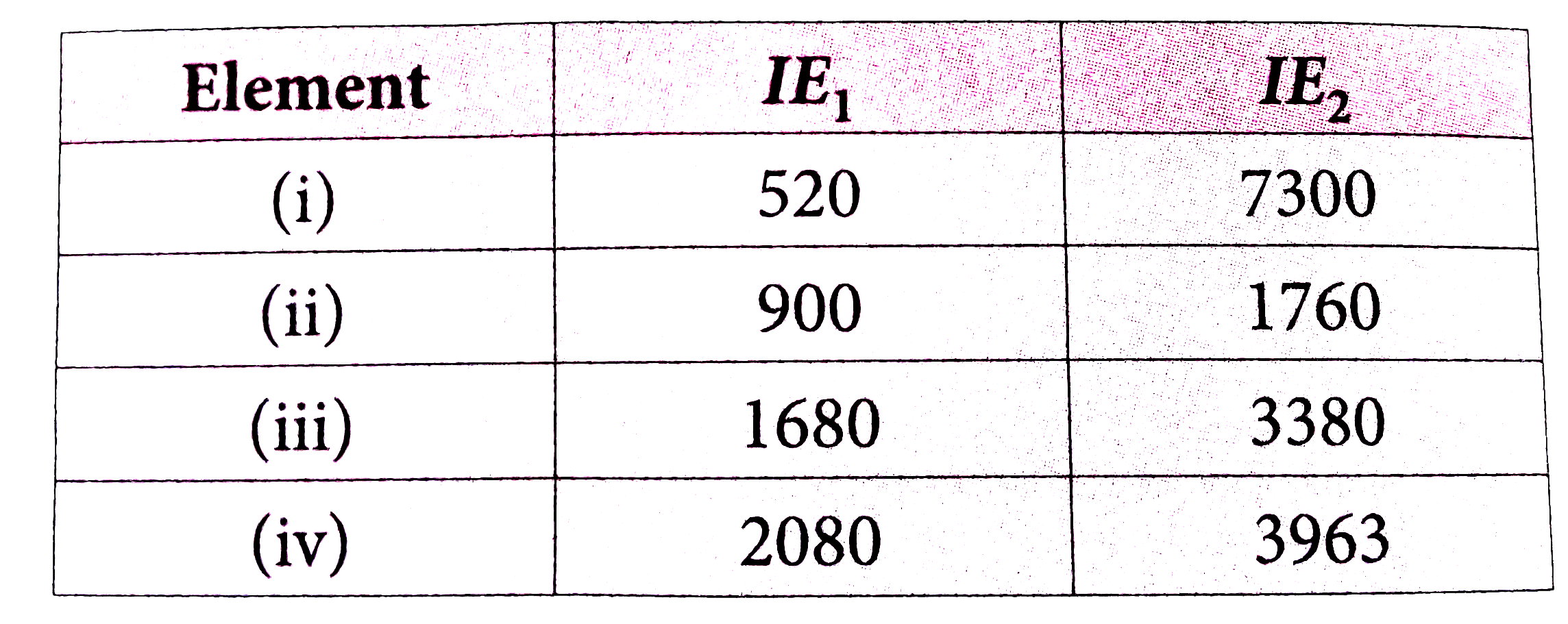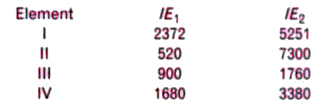Given an element having following ionisation enthalpies IE1=496kJmol and IE2=4562kJmol one mole hydroxide of this element is treated separated with HCl and H2SO4 respectively. Moles of HCl and H2SO4 reacted respectively is
2 and 0.5
1 and 1
1 and 0.5
1 and 2
The correct Answer is:C
Step by step video & image solution for Given an element having following ionisation enthalpies IE_1 = 496 (kJ)/(mol) and IE_2 = 4562 (kJ)/(mol) one mole hydroxide of this element is treated separated with HCl and H_2SO_4 respectively. Moles of HCl and H_2SO_4 reacted respectively is by Chemistry experts to help you in doubts & scoring excellent marks in Class 12 exams.
Updated on:21/07/2023Topper's Solved these Questions
Similar Questions
First and second ionisation enthalpies(in KJ/mol) of few elements are given below:

Which of the above elements will form halides with formula MX2?
View SolutionThe first and second ionisation enthalpies of a metal are 496 and 4560KJmol−1 , respectively. How many moles of HCI and H2SO4 Respectively , will be needed to react completely with 1 mole of the metal of the metal hydroxide ?
View Solution
Knowledge Check
Ionisation enthalpy (ΔtHlinkJmol−1) for the elements of group-13 follows the order
AB>AI>Ga>In>TIBB<AI<Ga<In<TICB<AI>Ga<In>TIDB>AI<Ga>In<TI
If enthalpy of neutralisation of HCl by NaOH is -58.84 kJ/mol and by NH4OH is -52.26 kJ/mol, then enthalpy of ionisation of NH4OH is
View SolutionAn element X has IE and EA respectively 275 and 1450 kJ mol−1. The electronegativity of element according to Pauling scale is
View SolutionConc. H2SO4 reacts with four moles of Ag to give ____ moles of Ag2SO4.
View SolutionGiven standard enthalpy of formation of CO(−110KJ mol−1) and CO2(−394KJ mol−1). The heat of combustion when one mole of graphite burns is
View SolutionIonisation enthalpy (ΔiH kJ mol−1) for the elements of group 13 follows the order.
View SolutionValues of 1st four ionisation energies (kJ/mol) of an element are respectively 496, 4563, 6913, 9541 the electronic configuration of that element can be.
View SolutionThe first (IE1) and the second (IE2) ionisation energies (kJ mol−1) of a few elements are given below :

Which of the above elements is likely to be
a reactive metal?
View Solution
